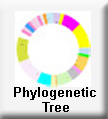


|
Photo Gallery- Homestead Nat'l Monument |
Description (from Jairajpuri, 1982)
Female: Body curved ventrally in an
open 'C' shape. Striae about 1um apart, continuing up to tail
tip. Lateral fields 1/7 to 1/6 body width usually appearing as a
plain band but rarely an incisure in the middle is discernible. Lip
region rounded, not set off and with slightly sloping sides defining a
truncate end. A distinct depression present at the oral aperture.
Annulations in lip region indistinct. Spear slender, 15-16 um
long, conical part 9-10 um long, basal knobs with sloping anterior
surfaces. Dorsal oesophageal gland orifice 4-6 um from basal
knobs. Oesophagus typical of the genus.
Excretory pore situated in the region of the basal bulb of the oesophagus,
or rarely a little behind, 55-65 um from anterior extremity.
Hemizonid usually at same level as excretory pore. Cardia small and
rounded. The reproductive system consists of an outstretched ovary
with 10-15 oocytes in a single row. Spermatheca large, rounded, empty.
Vulva flap prominent, rounded. Vulva-anus distance about 1 1/2 times
tail length or three to four times body width at vulva. Tail conoid,
2-4 anal body widths long, terminus variable in shape, often digitate or
indented.
Male: not found.
Type habitat and locality: Soil around roots of sugarcane, Saccharum officinarum L., from Savannah Sugar Company, Gengola state, North East Nigeria.
Differential diagnosis: Paratylenchus variatus n. sp. comes close to P. leptus Raski, 1975 and P. colbrani Raski, 1975. From the former it differs in the shape of the lip region and size of the spear (lip region without depression at oral aperture and spear 20-23 um long in P. leptus). From P. colbrani it differs in having only two or three lines in the lateral fields, in the shape of tail and the absence of males (lateral fields marked with four lines, tail bluntly rounded and males present in P. colbrani).
This species included in the Criconematid Project
DNA Sequences Obtained
| Specimen: | Collected: |
| KonzaI AD-130 | Konza Prairie, First survey |
 |
 |
 |